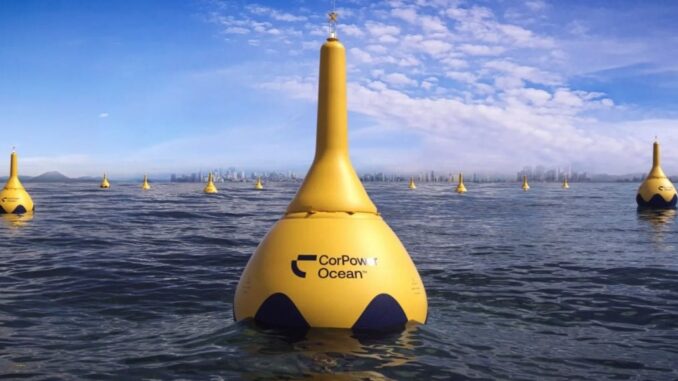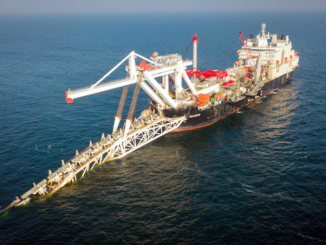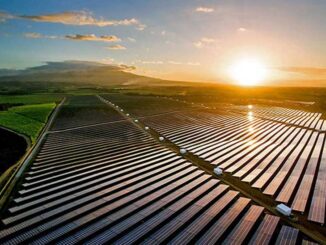
Home Marine Energy Wave energy to play instrumental role in heavy industry decarbonization, study finds
A new study has revealed that wave energy can play an instrumental role in the decarbonization of the steel manufacturing industry, which accounts for around 7% of global greenhouse emissions.
Illustration/CorPower Ocean’s wave energy farm (Courtesy of CorPower Ocean)Illustration/CorPower Ocean’s wave energy farm (Courtesy of CorPower Ocean)
The study, delivered by CorPower Ocean, Instituto Superior Técnico de Lisboa (IST) and a global green steel manufacturer, highlights how wave energy will positively impact the creation of green hydrogen to make green steel.
Traditionally, steel is made from iron ore with coke – a fossil fuel – in a blast furnace at high temperatures. More recent advances have led to the development of green steel, which is created using green hydrogen.
Green hydrogen is currently the only solution to decarbonize hard-to-abate sectors, such as steel, cement and the chemical industry, which cannot readily be electrified. Its production requires electrolysers to split water into oxygen and hydrogen using renewable energy.
With nuclear and hydro potential heavily exploited, a broader mix of baseload renewables are needed to support intermittent wind and solar resources, in order to deliver 24/7 carbon free energy.
Ocean energy to facilitate production of green hydrogen
The academic study focused on the running requirements of a 1GW electrolyser at a potential European green steel production facility, for 90% of the year. More than 800 simulations were performed calculating the optimized installed capacity of renewable energy, as well as purchases and sales to the grid.
It concluded that combining complementary renewable energy sources – such as land-based wind and solar with ocean-based wave power – led to a more stable and consistent power source to create green hydrogen. This meant significant reductions could be achieved in installed capacity required and cost of energy.
More specifically, findings show that introducing wave energy can help to half the requirement of installed capacity production and lower the cost of energy by 26%.
When only using solar and wind energy, the need to cover 90% demand resulted in an energy system of 8.4GW. By comparison, when adding 1GW of wave energy into the mix, the installed capacity required was reduced by 46% to 4.5GW.
The model was based on prices for 2030 where wave energy as a novel technology was set at more than double the LCOE compared solar and wind.
Anders Jansson, head of business development at CorPower Ocean, said: “At CorPower Ocean we have been studying the system value of wave energy for many years and this report proves once again how important wave energy is for future energy systems. Even though this was focused on a 1GW system, we see the same results from national and interconnected energy systems.”
Between 2020 and 2021, the global hydrogen market was valued at $130 billion and is estimated to grow more than 9% per year through 2030. However, more than 95% of current hydrogen production is fossil-fuel based.
Possible uses for hydrogen continue to expand across sectors including power generation, cement production, fuel cells for electric vehicles, heavy transport such as shipping, green ammonia production for fertilizers, cleaning products, refrigeration, and electricity grid stabilization.
Offshore Energy – Marine Energy LinkedIn



